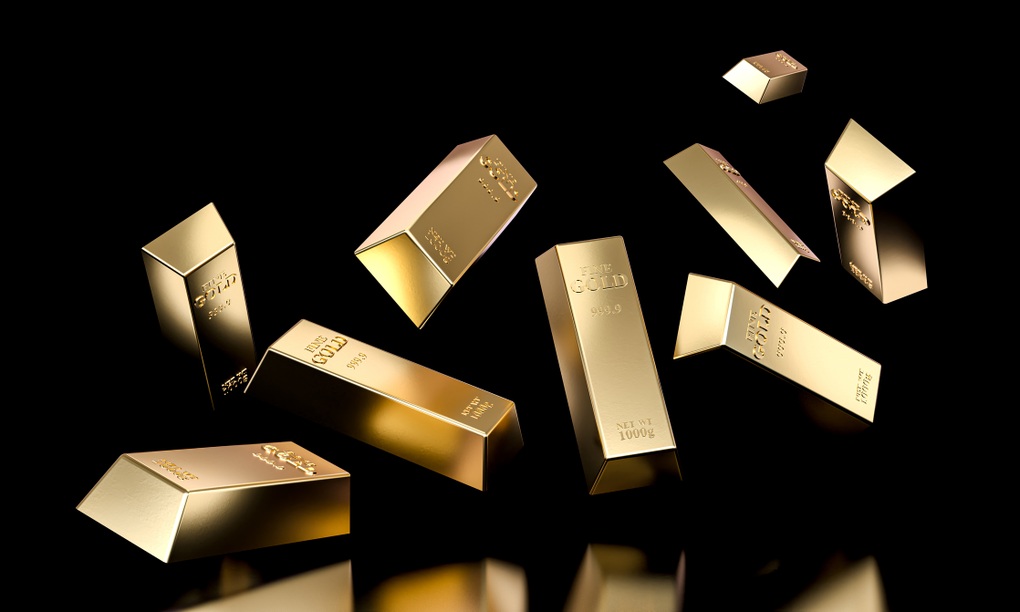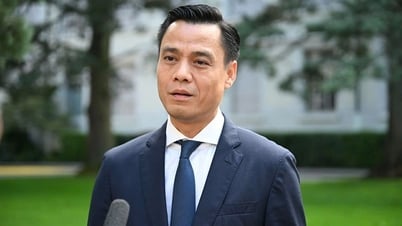The global gold market is being shaken by a series of factors, from hopes for a US-China trade deal to geopolitical hotspots. The commitment of the world's two largest economies to reduce taxes has somewhat calmed market sentiment, which has long viewed gold as a safe haven in times of escalating instability.
Investors' focus now is on upcoming US economic indicators, especially the US Federal Reserve's (Fed) move on the possibility of reducing interest rates - a key factor guiding gold prices in the short term.
Why does gold price fluctuate so much?
Gold prices have had spectacular "climbs", reaching historic peaks, then suddenly "plummeted" when the clouds of uncertainty in global trade have not completely cleared. In India, one of the world's largest gold consuming markets, the simmering conflict with Pakistan has caused many investors to seek gold as a "shelter" for their assets.
So, what does the gold price picture look like going forward? What factors will really dictate the direction of gold? Most importantly, what should investors do? Maneesh Sharma, Vice President, Commodities and Currencies at Anand Rathi Shares and Stock Brokers, has some interesting insights.
According to him, gold had an impressive growth week before, closing the session at 3,325 USD/oz. However, "the joy was short-lived", most of this achievement was "washed away" after the US and China unexpectedly reached a temporary agreement last weekend, committing to reduce taxes within 90 days. In the Indian market, the gold price on the MCX floor also adjusted accordingly, closing the week around 3,275 USD/oz.

World gold prices are fluctuating strongly, continuously reaching new peaks and then quickly adjusting in the context of the US and China joining hands to reduce taxes and geopolitical tensions that have not cooled down (Photo: Getty).
"The wind changes direction" from the US-China agreement: Gold "loses steam"
As the new week began, the US stock market made a strong rebound. The main reason was the "good news" from the US-China negotiations, with the two sides officially announcing an agreement to reduce tariffs and committing to continue dialogue towards a more comprehensive trade agreement. Specifically, Washington agreed to lower tariffs from 145% to 30%, while Beijing also responded by reducing tariffs from 125% to 10%.
The news was a “cold shower” on gold investors, who typically benefit from uncertainty. Gold’s rally was immediately halted. At the same time, data from the Prime Market Terminal showed a change in traders’ expectations: they now believe the Fed will cut interest rates only twice in 2025, instead of three as previously predicted. Expectations of fewer rate cuts tend to strengthen the US dollar, putting further downward pressure on gold.
Fed remains silent, investors anxiously await US economic data
Although the “handshake” between the US and China has temporarily eased tensions, many investors are still cautious and skeptical about the sustainability and details of the agreement. If any “glitch” appears, or the commitment is not implemented, the gold market could completely witness strong fluctuations again.
This week, special attention will be paid to key economic data from the US, including the producer price index (PPI) and core consumer price index (CPI). Analysts expect these figures to be flat compared to last month, partly due to the impact of the US's previous tariff hike on imported goods.
Another extremely important factor is the Fed's stance. The fact that the Fed has not made any specific "promises" about when it will start its rate-cutting cycle has added to the uncertainty in the market.
However, there is a glimmer of hope as Fed Chairman Jerome Powell is scheduled to deliver an important speech this week. If Powell expresses concerns about the health of the US labor market, expectations of the Fed easing monetary policy soon could increase. This would be a positive factor supporting gold prices, especially when the precious metal is in low price ranges.
Geopolitics and Seasonality: Gold Finds Its Own Way?
In addition to economic factors, the "heat" from geopolitical hotspots is also a variable that cannot be ignored. Investors are "holding their breath" to monitor the developments of the Russia-Ukraine tension, especially when there is information about a potential direct meeting between the two countries' leaders next Thursday in Türkiye. However, the fact that Russia has not confirmed the meeting and the ongoing fighting makes the situation even more unpredictable.
Expert Maneesh Sharma also noted the seasonal factor. The period from May to June is usually a period of low activity in the gold market. Therefore, it is likely that gold prices will enter a sideways phase or accumulate strength in the short term, waiting for clearer new dynamics.
While gold is under pressure, its “brother” silver is expected to maintain relative stability. More optimistic sentiment surrounding the US-China trade deal is expected to limit the white metal’s decline.
A thaw in trade tensions could be positive for silver, as over 50% of silver demand comes from key industries such as electronics manufacturing and solar energy. Investors will be watching closely to see if the US-China deal includes specific measures to boost industrial trade flows, as that would be a big boost for silver prices.
In short, the gold market is in a challenging period but there is no shortage of opportunities. Closely monitoring economic developments, the Fed's monetary policy and the geopolitical situation, combined with consulting reputable experts, will be the key to helping investors make wise and effective gold buying and selling decisions in the coming time.
Source: https://dantri.com.vn/kinh-doanh/gia-vang-bien-dong-manh-nen-mua-hay-ban-ngay-20250515114048646.htm




































































































Comment (0)